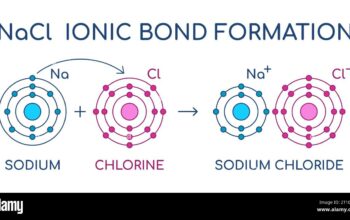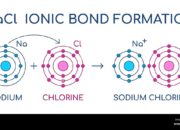The terms “atomic” and “nuclear” are often used interchangeably in popular discourse, yet they encapsulate distinct conceptual frameworks within the realm of physics. Understanding the subtleties and nuances inherent in these terms is pivotal for grasping the fundamental principles that govern matter and energy at the subatomic level. This discourse delves into the intricacies that differentiate atomic from nuclear phenomena, presenting a multi-faceted perspective aimed at both the academically inclined and the intellectually curious.
1. Defining Atomic and Nuclear Concepts
At its core, the term “atomic” pertains to the atom, the smallest unit of ordinary matter that retains the properties of an element. Atoms are composed of protons, neutrons, and electrons, which engage in various interactions defined by electromagnetic and strong nuclear forces. Conversely, “nuclear” refers exclusively to the nucleus of an atom—the dense central core where protons and neutrons reside. This distinction underscores the broader scope of atomic theory as it encompasses the entirety of the atom, while nuclear theory is more confined, investigating the interactions and reactions that transpire at the level of the nucleus.
2. Atomic Structure
The atomic model elucidates the arrangement of protons and neutrons within the nucleus, bound together by the strong nuclear force. Surrounding this nucleus are electrons that occupy discrete energy levels or orbitals. The behavior of these electrons is described by quantum mechanics, which dictates their probabilistic locations rather than fixed paths. This fascinating structure underpins the formation of chemical bonds and the myriad interactions that characterize elemental substances.
3. Nuclear Forces and Interactions
Within the nucleus, two primary forces are at play: the strong nuclear force and the weak nuclear force. The strong nuclear force is responsible for holding protons and neutrons together against the repulsive electromagnetic forces that arise due to the positive charges of protons. However, the weak nuclear force facilitates processes such as beta decay, where a neutron decays into a proton, emitting an electron and an antineutrino. This interplay of forces highlights the complexity and dynamism of nuclear interactions, distinct from atomic considerations.
4. Fission and Fusion: Nuclear Reactions Explained
Nuclear fission and fusion epitomize the transformative processes inherent in nuclear physics. Fission refers to the splitting of a heavy nucleus into smaller nuclei, a process that releases a substantial amount of energy, famously harnessed in nuclear reactors and atomic bombs. Uranium-235 and Plutonium-239 are commonly employed fissile materials in this context.
Conversely, nuclear fusion involves the amalgamation of light nuclei to form a heavier nucleus, an exothermic reaction that fuels the sun and other stars. The fusion of isotopes of hydrogen, such as deuterium and tritium, exemplifies this phenomenon, yielding helium and an enormous release of energy. Understanding these nuclear processes provides insight into both astrophysical phenomena and potential sustainable energy solutions.
5. The Role of Radiation
Both atomic and nuclear physics extend into the realm of radiation, the emission of energy in the form of particles or electromagnetic waves. Atomic radiation primarily pertains to the decay of unstable atomic nuclei, resulting in the release of alpha, beta, or gamma radiation. In contrast, nuclear radiation encompasses the emissions resulting from nuclear reactions, including those from fission and fusion events.
Alpha particles, comprised of two protons and two neutrons, are emitted during certain types of radioactive decay, while beta particles are high-energy, high-speed electrons or positrons. Gamma rays, being electromagnetic radiation, can traverse considerable distances and are often produced during nuclear transitions. The implications of such radiation are profound, influencing fields from medicine to energy production.
6. Applications in Modern Science and Technology
The applications of atomic and nuclear physics are vast and varied, heralding advancements across multiple disciplines. Atomic theory serves as the foundation for chemistry, informing our understanding of molecular interactions and reactions. Furthermore, atomic models are integral in technologies such as semiconductors and lasers, which have revolutionized electronics and communication.
In the arena of nuclear physics, the implications are equally significant. Nuclear medicine utilizes radioactive isotopes for diagnostic imaging and treatment of diseases, particularly cancers. Additionally, the field encompasses nuclear energy, which harnesses fission reactions to generate electricity—offering a low-carbon alternative to fossil fuels amid the pressing concerns of climate change. Moreover, advancements in fusion research aim to replicate the sun’s energy processes, potentially providing an inexhaustible energy source capable of meeting global demands.
7. Ethical Considerations and Future Directions
The exploration of atomic and nuclear sciences is not without its ethical quandaries and societal implications. The historical context of atomic bombs serves as a stark reminder of the destructive potentials of these scientific advancements. As nuclear technology continues to evolve, the balance between harnessing its benefits and mitigating its risks remains a salient challenge for policymakers, scientists, and the global community.
Future directions in atomic and nuclear research may focus on enhancing safety in nuclear power generation, developing novel isotopes for medical applications, and investigating unexplored realms of particle physics. These avenues promise further unraveling of the universe’s complexities, ultimately contributing to humanity’s collective understanding of the fundamental forces that shape our existence.
In conclusion, while atomic and nuclear physics are intricately linked, they embody distinct realms of study, each contributing to our grasp of matter and energy. Their interplay permeates various facets of science, technology, and ethics, offering a rich tapestry of inquiry for those striving to elucidate the mysteries of the universe.












